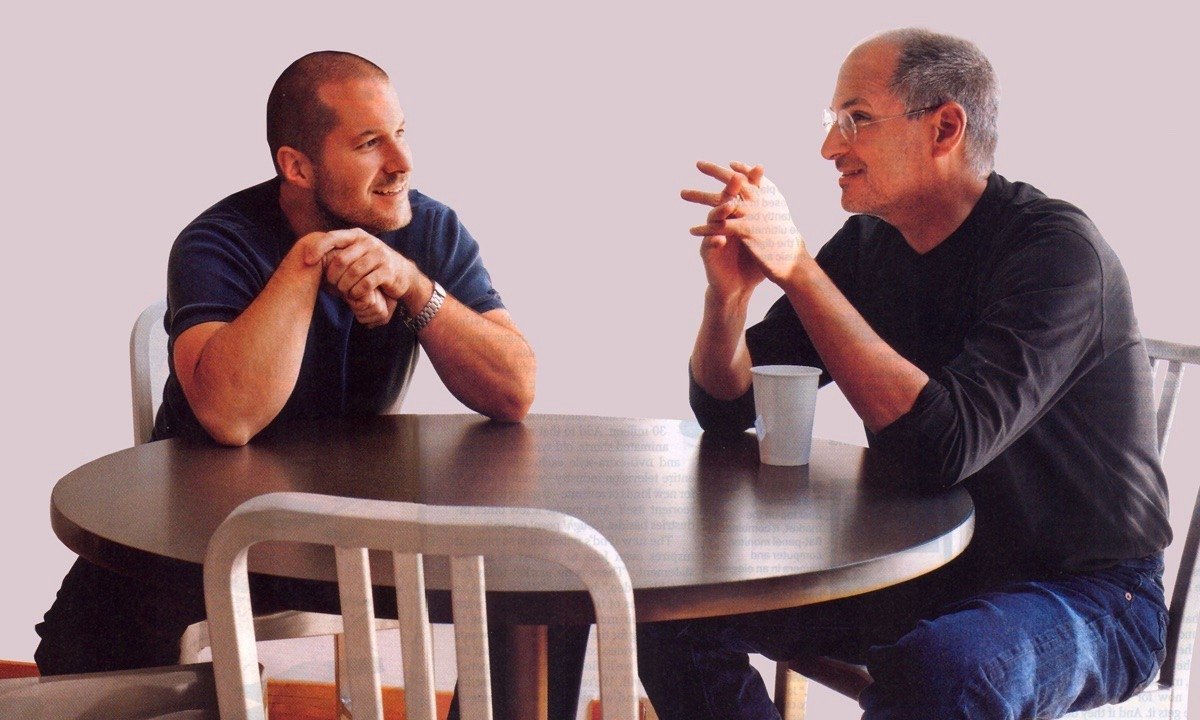Difference between revisions of "Focus"
(+= Steve Jobs & Jony Ive) |
(+= File:Steve Jobs and Jony Ive reflect.jpeg) |
||
| Line 1: | Line 1: | ||
[[File:Steve Jobs and Jony Ive reflect.jpeg]] | |||
Shortly after Steve Jobs returned as the CEO of Apple in 1997, he met with Jony Ive, Apple’s Senior VP of industrial design. Apple had 40 products on the market. “Jony, how many things have you said no to?” Jobs asked. Ive was confused. “You have to understand,” Jobs said, “There are measures of focus, and one of them is how often you say no.” “What focus means,” Jobs taught Ive, “is saying no to something that you—with every bone in your body—think is a phenomenal idea, and you wake up thinking about it, but you say no to it because you're focusing on something else.” | Shortly after Steve Jobs returned as the CEO of Apple in 1997, he met with Jony Ive, Apple’s Senior VP of industrial design. Apple had 40 products on the market. “Jony, how many things have you said no to?” Jobs asked. Ive was confused. “You have to understand,” Jobs said, “There are measures of focus, and one of them is how often you say no.” “What focus means,” Jobs taught Ive, “is saying no to something that you—with every bone in your body—think is a phenomenal idea, and you wake up thinking about it, but you say no to it because you're focusing on something else.” | ||
Latest revision as of 11:42, 27 June 2023
Shortly after Steve Jobs returned as the CEO of Apple in 1997, he met with Jony Ive, Apple’s Senior VP of industrial design. Apple had 40 products on the market. “Jony, how many things have you said no to?” Jobs asked. Ive was confused. “You have to understand,” Jobs said, “There are measures of focus, and one of them is how often you say no.” “What focus means,” Jobs taught Ive, “is saying no to something that you—with every bone in your body—think is a phenomenal idea, and you wake up thinking about it, but you say no to it because you're focusing on something else.”
Jobs walked up to a whiteboard and drew a 2 x 2 grid. On top, he wrote “Consumer” and “Professional.” Down the side, “Portable” and “Desktop.” Four products—meet Apple’s new radically focused product line, Jobs said.
After that meeting, over the next two decades, Jobs and Ive—focused on making a few high-quality products while saying no to everything else—transformed a dying, near-bankrupt company into one of the most valuable companies in the world, worth over $2.9 trillion.
Takeaway 1
The philosopher Marcus Aurelius pointed out that the focus of doing less “brings a double satisfaction.”:
- you get the satisfaction of having fewer things to do; and…
- you get the satisfaction of doing those fewer things at a higher level. You get “to do less, better.”
During Steve Jobs’ first visit to Jony Ive’s design studio, he looked around, and then he said, “Fuck, you’ve not been very effective, have you?” It was clear to Jobs that Ive was full of ideas and potential he wasn’t able to execute or fulfill under Apple’s previous leadership. In the Jobs era of “doing less, better,” Ive was very effective. Some products he designed include: iMac, iPod, iPhone, iPad, Apple Watch, and AirPods.
Takeaway 2
Even though he slashed the product line down to four products, Jobs loved to have and hear ideas. “Steve used to say to me,” Ive said, “and he used to say this a lot, ‘Hey, Jony, here’s a dopey idea.’ And sometimes they were: really dopey. Sometimes they were truly dreadful. But sometimes they took the air from the room, and they left us both completely silent.”
It made me think of what Jerry Seinfeld identifies as the ultimate skill of the artist: “taste and discernment.” “It’s one thing to create,” Seinfeld says. It’s one thing to have ideas. “The other is you have to choose. ‘What are we going to do, and what are we not going to do?’” What are we going to add to the product line, and what are we not going to add? “This is a gigantic aspect of [artistic] survival,” Seinfeld continues. “It’s kind of unseen—what’s picked and what is discarded—but mastering that is how you stay alive.”
——
“Everything just got simpler. That’s been one of my mantras—focus and simplicity.” — Steve Jobs
Seth Godin, “The number #1 reason to focus”:
- You will care more about the things that aren't working yet, you'll push through the dip, you'll expend effort and expose yourself to fear.
- When you have a lot of balls in the air, it's easy to just ignore the ones that make you uncomfortable or that might fall.
- Success comes from doing the hard part. When the hard part is all you've got, you're more likely to do it.
- And this is precisely why it's difficult to focus. Because focusing means acknowledging that you just signed up for the hard part.
